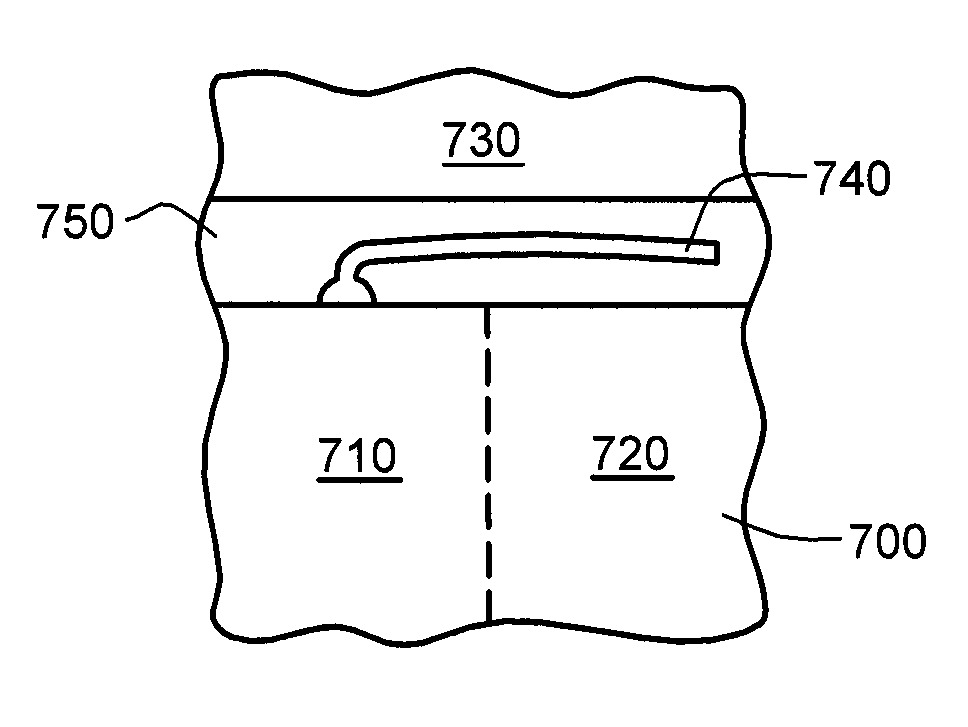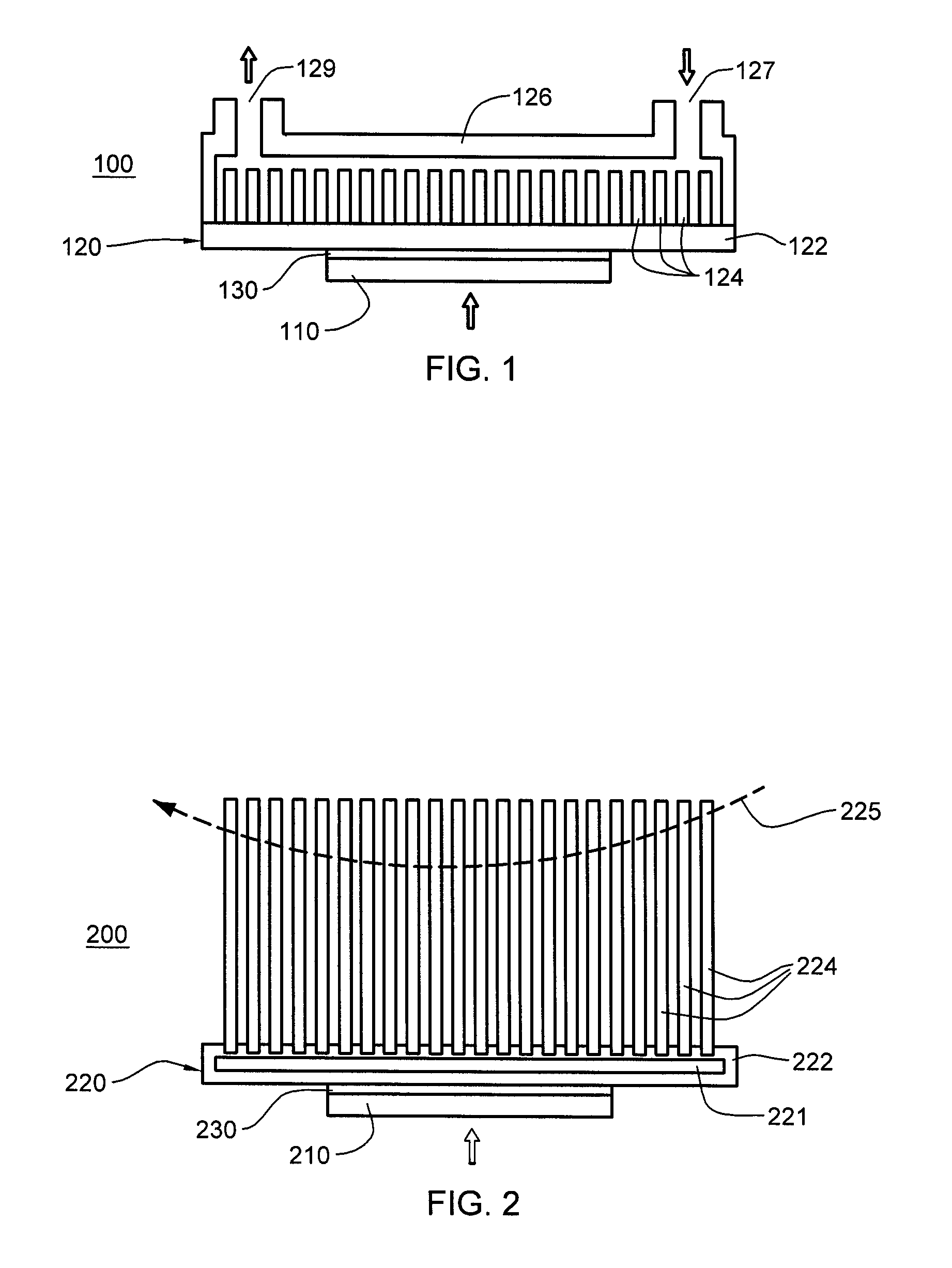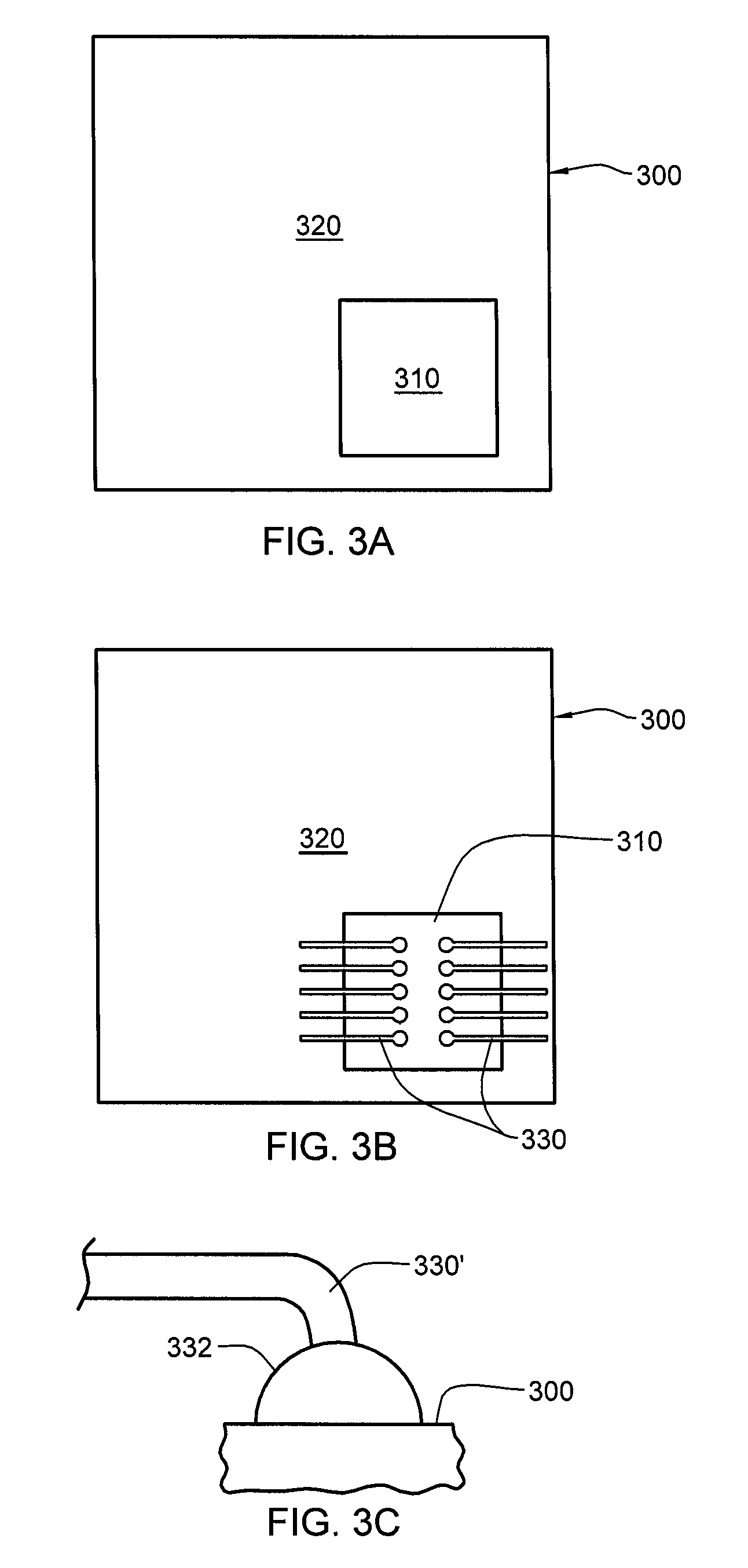Thermally conductive composite interface, cooled electronic assemblies employing the same, and methods of fabrication thereof
a composite interface and heat transfer mechanism technology, applied in the direction of electrical apparatus construction details, semiconductor/solid-state device details, lighting and heating apparatus, etc., can solve the problem of thermal grease conduction cooling schemes not well suited to handle such disparate fluxes, thermal interface resistance between, and devices with a highly non-uniform heat flux distribution. achieve the effect of enhancing the coupling of a cooling assembly
- Summary
- Abstract
- Description
- Claims
- Application Information
AI Technical Summary
Benefits of technology
Problems solved by technology
Method used
Image
Examples
Embodiment Construction
[0027]Generally stated, disclosed herein is a thermally conductive composite interface for coupling a cooling assembly to one or more heat-generating electronic devices. The thermally conductive composite interface includes a plurality of thermally conductive wires or pin fins, formed of a first material having a first thermal conductivity, and a thermal interface material, which at least partially surrounds the plurality of thermally conductive wires and thermally interfaces the cooling assembly to a surface to be cooled of the one or more heat-generating electronic devices when the thermally conductive composite interface is employed between the cooling assembly and the surface to be cooled. The thermal interface material comprises a second material having a second thermal conductivity, wherein the first thermal conductivity of the first material is greater than the second thermal conductivity of the second material.
[0028]When the thermally conductive composite interface is employ...
PUM
| Property | Measurement | Unit |
|---|---|---|
| temperature | aaaaa | aaaaa |
| diameter | aaaaa | aaaaa |
| thick | aaaaa | aaaaa |
Abstract
Description
Claims
Application Information
 Login to View More
Login to View More - R&D
- Intellectual Property
- Life Sciences
- Materials
- Tech Scout
- Unparalleled Data Quality
- Higher Quality Content
- 60% Fewer Hallucinations
Browse by: Latest US Patents, China's latest patents, Technical Efficacy Thesaurus, Application Domain, Technology Topic, Popular Technical Reports.
© 2025 PatSnap. All rights reserved.Legal|Privacy policy|Modern Slavery Act Transparency Statement|Sitemap|About US| Contact US: help@patsnap.com



